most folks know i'm an autistic critter, and one of my handful of special interests is animals and animal biology! i'm interested in them as a broad category, but i've also got favorites and the occasional hyperfixation on specific species or groups - lagomorphs have been a mainstay since i was very young, and i had "phases" throughout elementary school that included penguins, hamsters, cats, and platypuses, to name just a few off the top of my head!
i'd spend a great deal of time poring over factual books or webpages about whatever animal held my interest at the moment, as well as drawing and creating things related to them. i've racked up a reputation since then among family and friends as the "animal person (critter)" who knows a lot of obscure facts about other creatures XP
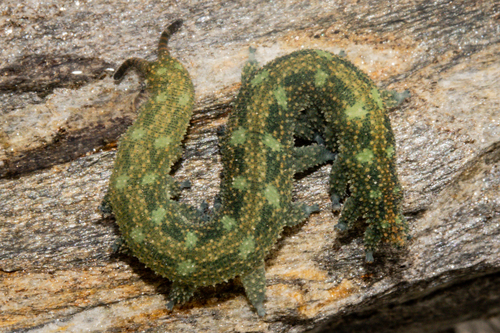
photo by Carey_Knox_Southern_Scales
as the title of this post may suggest, my current hyperfixation is on velvet worms, also known as the phylum Onychophora. my interest in them was piqued somewhere in late 2023 and they've since been living rent-free in my head...a case of brain (velvet) worms, if you will X'3
let's go over some neat facts about these critters!
- the name Onychophora comes from Greek, and means "claw-bearer" - all velvet worms possess two retractable claws on the end of each foot to give them traction on uneven terrain!
- velvet worms are close relatives of Arthropoda (insects, crustaceans, arachnids) and Tardigrada (tardigrades, also called "water bears"!)
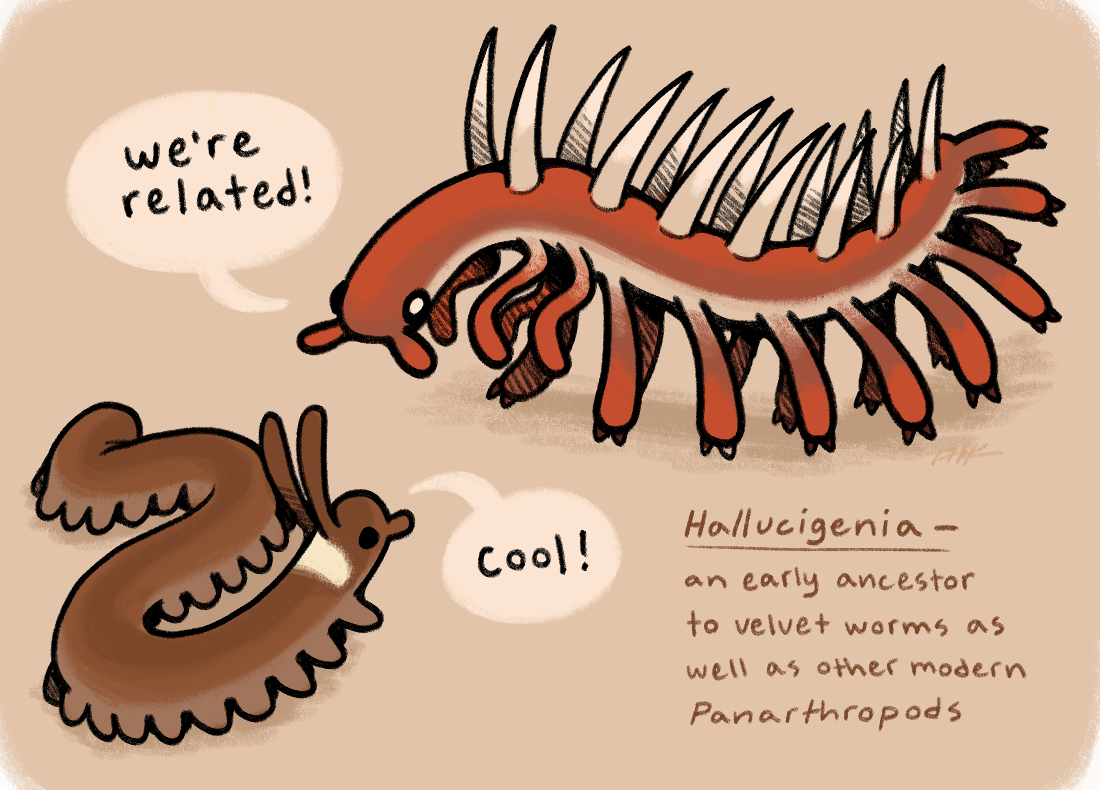 these critters' earliest ancestors can be traced back to the Cambrian period (~500 million years ago), and the first true velvet worms emerged out of the water in the Devonian period (~400 million years ago), just in time for the first forests to pop up on land! they've remained virtually unchanged since then, and can be found in tropical and temperate zones across the southern hemisphere
these critters' earliest ancestors can be traced back to the Cambrian period (~500 million years ago), and the first true velvet worms emerged out of the water in the Devonian period (~400 million years ago), just in time for the first forests to pop up on land! they've remained virtually unchanged since then, and can be found in tropical and temperate zones across the southern hemisphere
- while most species have rudimentary eyes, they primarily rely on other senses to navigate the world - their bodies are covered in sensitive papillae that detect minute air currents, and their long antennae further help them navigate by touch
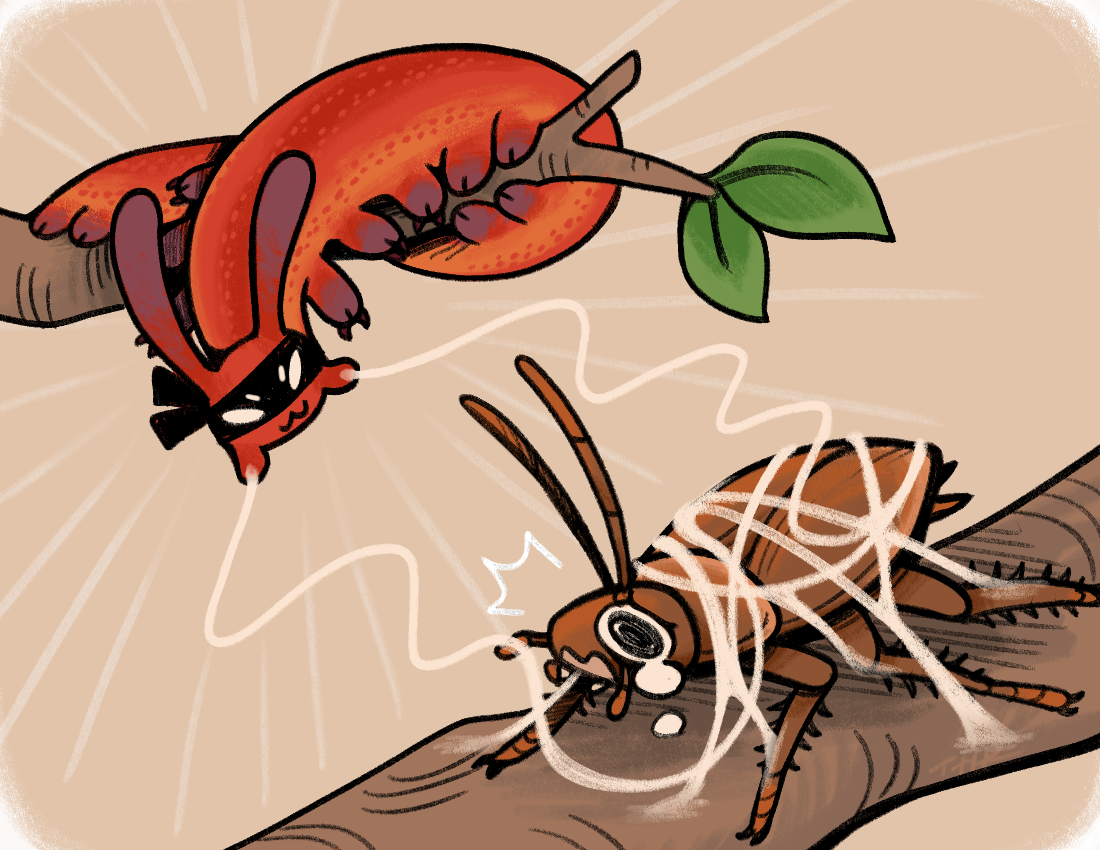 velvet worms are ambush predators! they move slowly enough that their prey don't notice their presence, at times getting close enough to touch the
unsuspecting victim with their antennae to assess their size. they then use the two smaller "antennae" on their head to shoot a sticky slime to ensnare
their prey, and a pair of mandibles finish the job by piercing a softer part of the body and injecting it with digestive fluids. yummy! :>
velvet worms are ambush predators! they move slowly enough that their prey don't notice their presence, at times getting close enough to touch the
unsuspecting victim with their antennae to assess their size. they then use the two smaller "antennae" on their head to shoot a sticky slime to ensnare
their prey, and a pair of mandibles finish the job by piercing a softer part of the body and injecting it with digestive fluids. yummy! :>
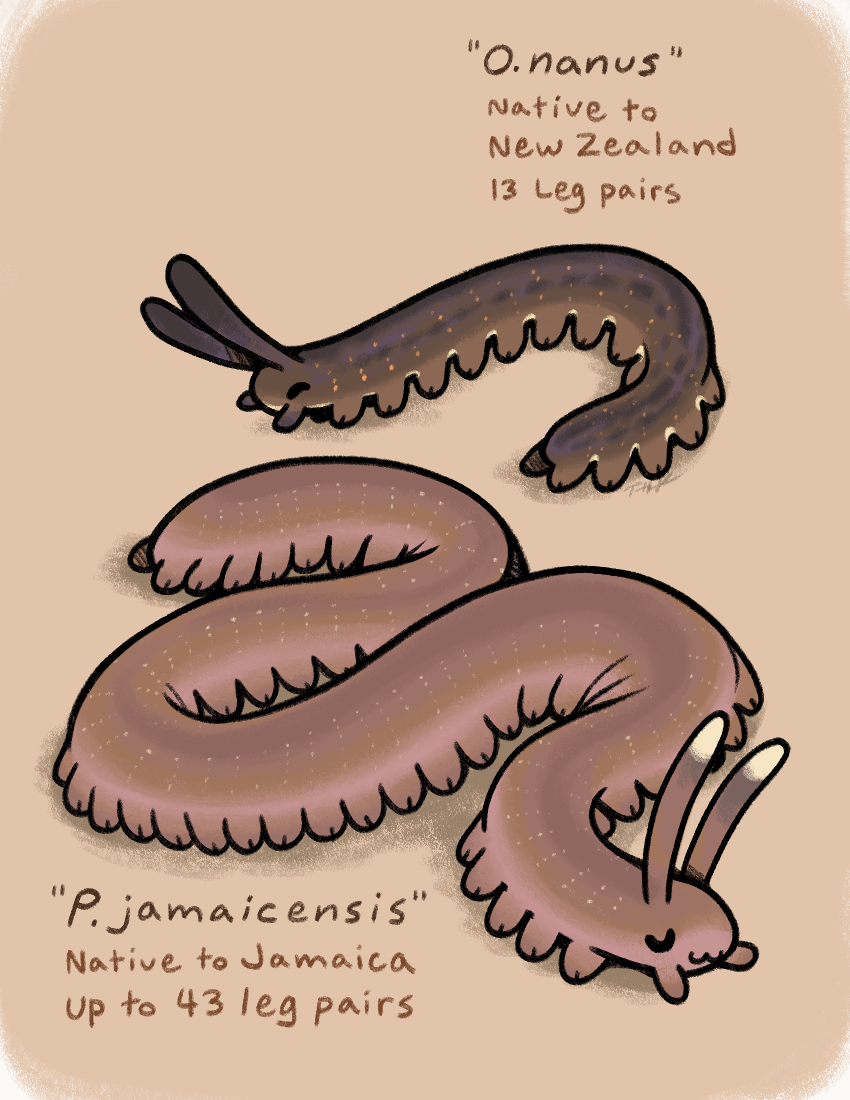 these little guys got a whole lot of legs! across the roughly 200 species of velvet worm, the smallest number of legs observed was 13 pairs
(Ooperipatellus nanus), and the largest was a whopping 43 pairs! (Plicatoperipatus jamaicensis)
these little guys got a whole lot of legs! across the roughly 200 species of velvet worm, the smallest number of legs observed was 13 pairs
(Ooperipatellus nanus), and the largest was a whopping 43 pairs! (Plicatoperipatus jamaicensis)
- they're social! some species have been observed living in family groups and hunting together, and they form social hierarchies wherein the dominant worms (usually a female) feed first
they're fascinating animals! if they weren't such a rarity and notoriously hard to keep in captivity, i'd probably try my paws at keeping a terrarium of them myself! i suppose i'll have to settle for admiring them from afar for now X'3
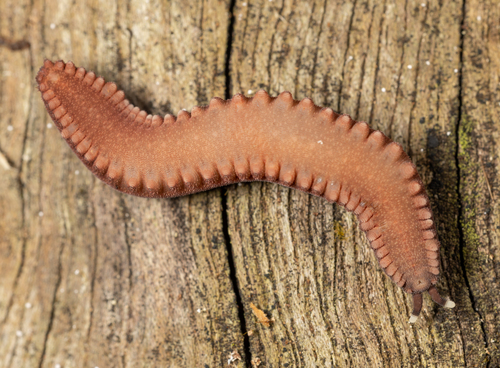
photo by Gonzalo Giribet
the research on them is really neat, too! their slime-shooting ability has been studied by physicists, and materials scientists are interested in how the slime's composition could help create sustainable synthetic material. they are also frequently studied in order to understand the origins of arthropod evolution, as they're thought to resemble a more primitive arthropod form!
i drew myself as a velvet worm-adjacent creature some time ago, and i've continued to come back to it as a favorite form now... they're soft and squishy, with lots of cute little legs and pretty colors, so what's not to love?~
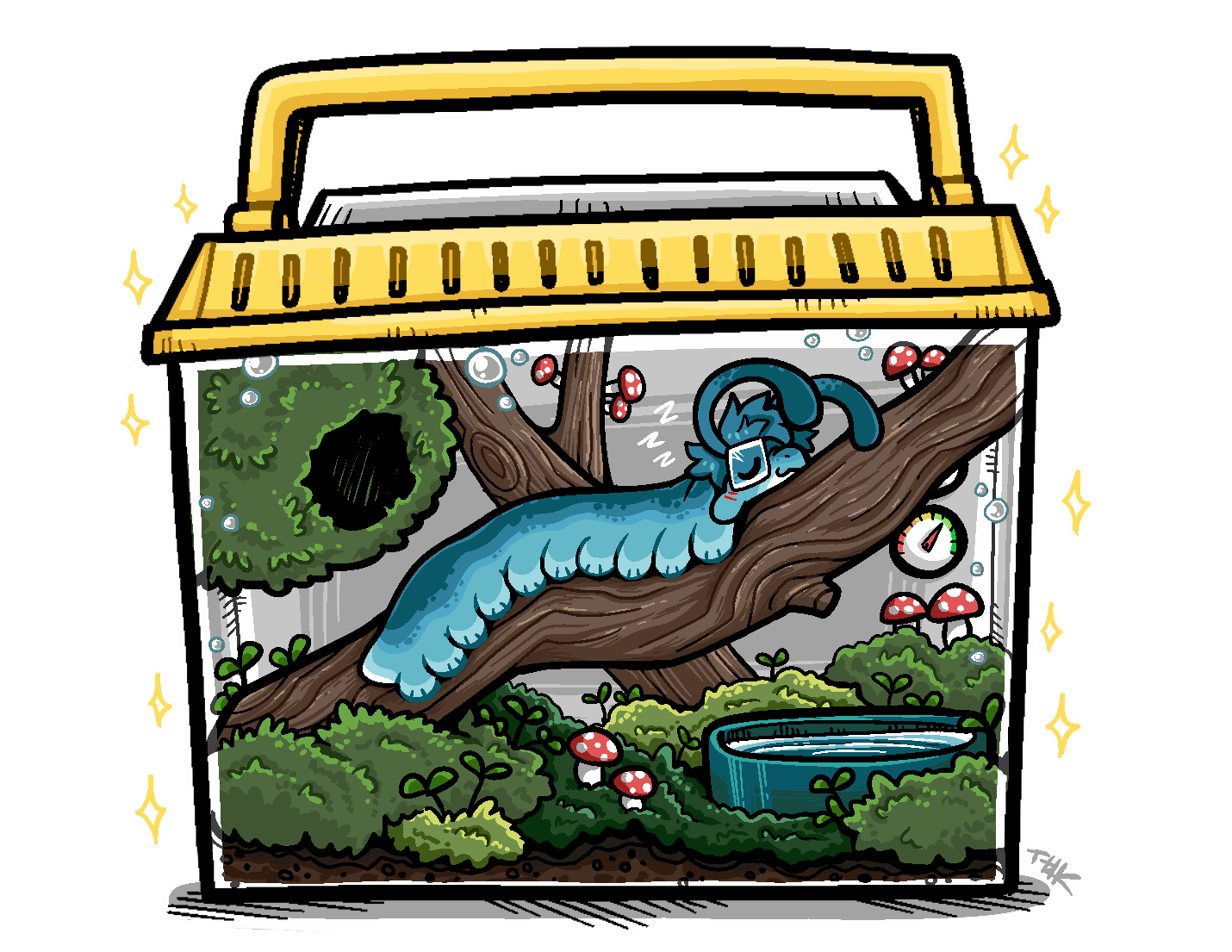
References
- Telford MJ, Bourlat SJ, Economou A, Papillon D, Rota-Stabelli O. The evolution of the Ecdysozoa. Philos Trans R Soc Lond B Biol Sci. 363(1496):1529-37 (2008).
- Smith, M., & Ortega-Hernández, J. Hallucigenia’s onychophoran-like claws and the case for Tactopoda. Nature, 514(7522), 363-366 (2014).
- Monge-Najera, Julian. Phylogeny, biogeography and reproductive trends in the Onychophora. Zoological Journal of the Linnean Society. 114 (1): 21–60 (1995).
- Reinhard, Judith; Rowell, David M. Social behaviour in an Australian velvet worm, Euperipatoides rowelli (Onychophora: Peripatopsidae). Journal of Zoology. 267 (1): 1–7 (2005).
- Martin, C., Jahn, H., Klein, M. et al. The velvet worm brain unveils homologies and evolutionary novelties across panarthropods. BMC Biol 20, 26 (2022).
(i used wikipedia to find a lot of these, haha)